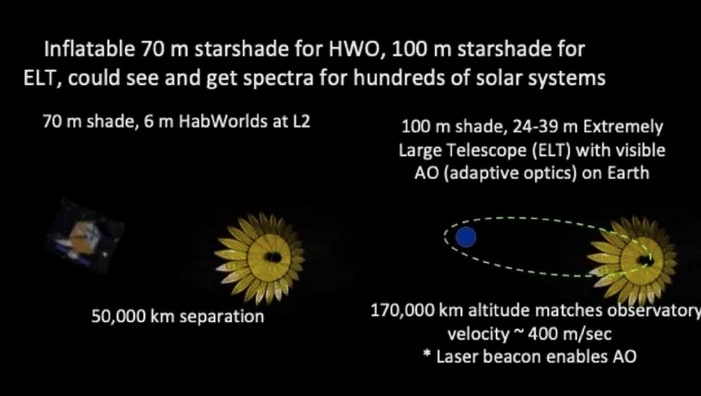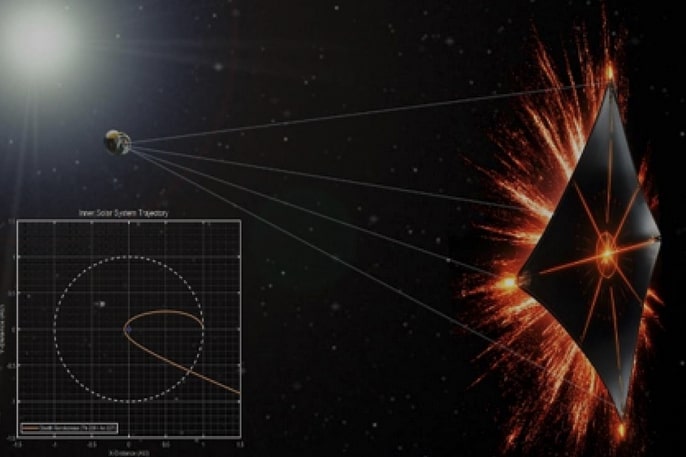Now Reading: Inflatable StarShade to Aid Imaging of Earthlike Exoplanets
-
01
Inflatable StarShade to Aid Imaging of Earthlike Exoplanets
Inflatable StarShade to Aid Imaging of Earthlike Exoplanets

Fast Summary
- NASA’s John Mather (Goddard Space Flight Center) is developing Inflatable Starshades for Earthlike Exoplanets (ISEE) with sizes ranging from 35 to 100 meters in diameter under the Innovative Advanced Concepts (NIAC) program.
- The starshade technology aims to be lower in mass, cost, and complexity while achieving high science performance by observing over 100 celestial targets.
- Compatible telescopes include the planned Habitable Worlds Observatory (HWO) and ground-based european Extremely Large Telescope as part of the Hybrid Observatory for Earthlike Exoplanets (HOEE).
- HWO is proposed to launch by 2041 at an estimated $11 billion cost, seeking habitable exoplanets and biosignatures like oxygen and methane using spectroscopy.
- HOEE integrates ultra-large inflatable starshades with existing ground telescopes,promising unprecedented planet-finding capabilities.
- A focus on lightweight designs could reduce starshade mass by a factor of ten while maintaining optical efficiency. Testing involves building small-scale prototypes in laboratories before deployment.
- Key challenges include perfect shape maintenance, precision positioning, mechanical scaling to large sizes, and integration with space-ground observatory systems.
Indian Opinion Analysis
NASA’s advancement of inflatable starshades signifies a potential breakthrough in studying Earth-like exoplanets. By effectively blocking starlight while revealing planets beyond our solar system’s reach, this technology could answer major questions about life elsewhere in the universe. For India-emerging as a space-faring nation-this innovation reiterates the importance of investing in advanced telescope design and partnerships within global astronomy projects.
India’s burgeoning investments through ISRO or collaborative ventures could benefit considerably by benchmarking such efforts. The scalability challenge resolved here-a dramatic mass reduction without compromising performance-is especially relevant for India’s low-cost but highly-efficient space missions.Additionally, India’s strategic involvement alongside international observatories may bolster its profile as a key contributor to planetary exploration efforts aimed at understanding habitable zones beyond Earth.read More


























